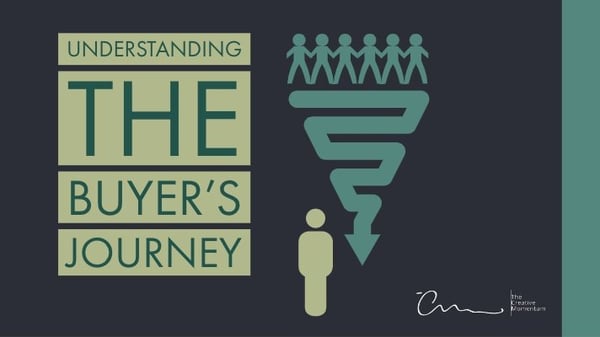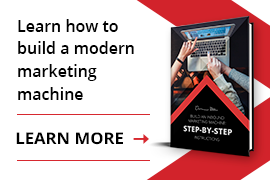 The concept of inbound marketing revolves around the exchange of information – businesses provide helpful content that website visitors are searching for in exchange for personal information that converts them into leads and ultimately into customers. When putting the approach into practice, “producing good content” is a great place to start, but it doesn’t quite encapsulate the nuances of a well-crafted, targeted content marketing strategy.
The concept of inbound marketing revolves around the exchange of information – businesses provide helpful content that website visitors are searching for in exchange for personal information that converts them into leads and ultimately into customers. When putting the approach into practice, “producing good content” is a great place to start, but it doesn’t quite encapsulate the nuances of a well-crafted, targeted content marketing strategy.
A solid inbound marketing strategy begins with target market (or buyer persona) data and a plan to produce and distribute the content that each buyer needs at just the right time. Critical to developing that plan is the concept of the buying cycle i.e. the buyer’s journey.
The Sales Funnel
The “funnel” is a simple and useful analogy for understanding the process from lead conversion to eventual sale. There are three phases in the buyer’s journey corresponding from the top to the bottom of the funnel. Each progressive phase tapers down to the final opening where sales are closed. The diminishing size of each phase, as represented by the funnel shape, illustrates the decreasing size of each pool from complete stranger, to lead, to customer. Each phase narrows down as you reach the most valuable lead.
By understanding the entire process that an interested buyer goes through, you can tailor your content into phases targeted towards each.
Phase 1: Awareness Stage
The Awareness stage encompasses the first phase of the journey, your broadest demographic, and your lead-generation pool. During the consideration phase, buyers have not yet fully identified their own need for a product or service, namely, the problem that it offers a solution to.
A potential buyer at the awareness stage could be a SMB owner or someone in middle management pursuing a vague task of increasing output and productivity. It could be a teacher who doesn’t feel that her lessons are connecting with her students. It could be an e-commerce website unhappy with their numbers. In each case, there is some underlying need for improvement that could be facilitated with a product or service addressing their challenge. However, none of these buyers have yet identified precisely what is affecting their productivity, engagement, or underperformance.
A traditional advertisement would go through all phases of the journey in one fell swoop, identifying the problem and pitching a sale in the same breath. The inbound approach revolves around lead nurturing. In an inbound marketing approach, you would structure content towards buyers at the awareness phase towards in-depth discussions of their specific need–aimed at understanding them and providing ample resources to explore and understand the challenges and solutions inherent to their standing.
Phase 2: Consideration Stage
Buyers can reach the consideration stage of their own accord through careful consideration, through the advice of others, or from outside resources. A successful inbound strategy has shepherded a segment of buyers from the awareness stage into consideration through effective content delivery. If you are able to do so successfully, you’ve already established yourself as an authority in your niche and built trust with a lead.
In the consideration phase, buyers know what their specific challenge is, and they’ve committed to fixing it. The SMB owner knows that their CRM software lacks adequate customization. The teacher knows that multimedia resources are critical to maintaining the focus of her students. The e-commerce website knows that faulty UX design increases bounce rates. Now, the question is how to go about addressing these issues. What are the different options available? What are the pros and cons of each? What’s within the scope of their resources and their specific challenge? There’s always a spectrum from cost-efficient to space age tech, and each buyer goes through the process of considering their solution within that spectrum.
Content in the consideration phase starts to become more promotional in discussions of your specific product. In addition to broader resources, part of your content campaign encapsulates a separate effort to establish your own value within your niche.
Phase 3: Decision-Making Stage
The decision-making stage is the end-point and smallest portion of your sales funnel. These are buyers who know what their problem is; they’ve chosen a solution category and the last consideration is who to turn to for implementation. The SMB owner knows that outsourced developers can help him create custom objects in SalesForce. The teacher knows that she can subscribe to content from leading universities and public resources. The e-commerce website knows that a web development firm can implement UX best practices to his current model.
Content addressing buyers at the decision-making stage encompasses straightforward offers. They know what they want and your goal is to illustrate that you deliver a comprehensive solution at a competitive price. Ideally, a buyer who has been with you from the initial phases of their journey will already have provided some information, either specifically through subscriptions or contact exchange or indirectly through analytics. Most importantly, if you’ve executed a successful inbound strategy, you’ve illustrated that you understand the full scope of their challenge as an authority and they’ve already revealed strong motivation to buy by simply arriving here. The payoff from your earlier efforts is an established connection of trust with solid leads.
A 3-stage Tool for Inbound Marketing Success
The buyer's journey is an integral part of any inbound marketing campaign. Understanding it means knowing how to strategically develop new content to fit holes within your content strategy. Your inbound campaign can be fine-tuned by examining how each of stages are performing in terms of generating qualified leads. Too few initial prospects or visits? Expand on your awareness stage content. Not enough sales-qualified leads? Examine your decision-making stage content.
Learn to use the buyer's journey as a tool to weed out prospects who aren't your kind of customer and draw in those who are, and you'll find your inbound campaign will improve not just your visitor count, but your conversions, too.

